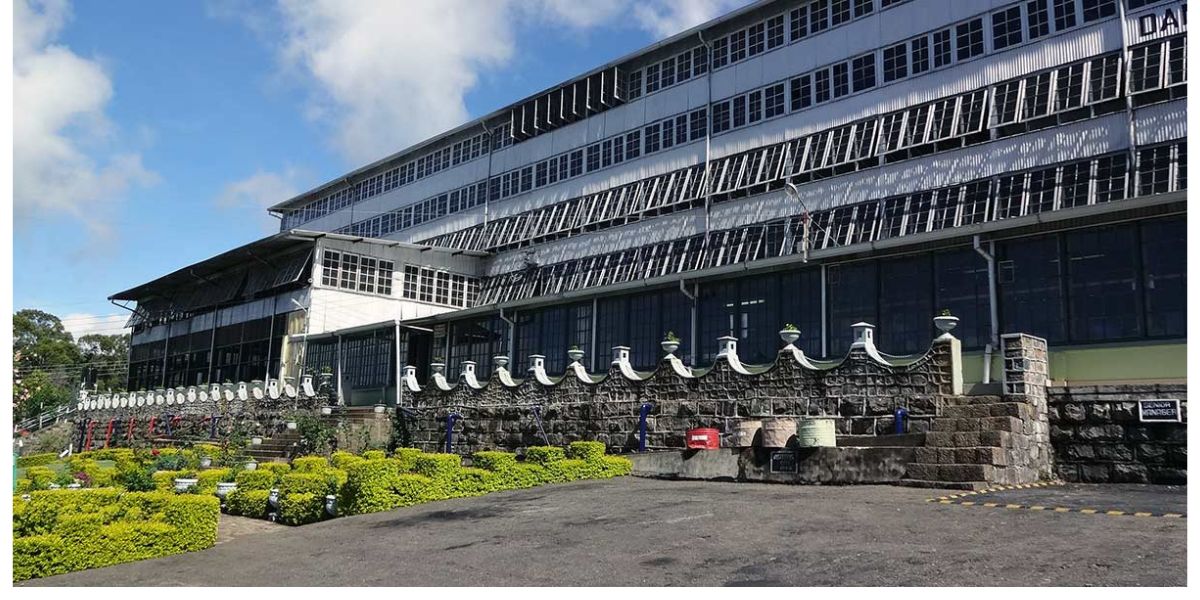BANDARAWELA / HAPUTALE
Bandarawela is a large town located in the district of Badulla, in the province of Uva, Sri Lanka, 28 km from Badulla. Bandarawela is a famous retirement center due to the pleasant climate and access to local facilities, a busy market town that is a nice jump-off point to explore the surrounding region. With little to attract visitors, if you’re going east or further into the Hill Country, the city is a nice transport hub.
Haputale is a town in the Uva Province of Badulla District, Sri Lanka, close to the town of Bandarawela. The elevation above sea level is 1431 m. The region is rich in thick biodiversity with countless flora and fauna varieties. In Haputale, where tea plantations cover the hillsides, and where the cemetery of the beautiful Anglican church of St Andrew's is packed with memories of the colonial past, there is much proof of the legacy of British planters. The mountain ridge on which the city is located shows excellent views of the south coast, and at night you can see the Hambantota lighthouse.
ATTRACTIONS IN BANDARAWELA AND HAPUTALE

LIPTON SEAT VIEW POINT
The name Lipton’s Seat says it all. It’s a famous 1970 m above sea level perspective. Sir Thomas Lipton used to sit and contemplate his plantation with its stony landscape and green tea bushes, this accurate place in the Haputale Mountains overlooking the Dambetenna Tea Estate.
This is situated about 18 kilometers from Haputale (7 kilometers from Dambetenna Tea Factory) under excellent weather conditions; you will be witnessing some incredible panoramic views in the hill country that you would ever discover. Plan your trip to the site a little soon as it may already be cloudy from 10 a.m.
Once you reach the top of Lipton's Seat, in the perspective of Thomas Lipton himself, you will have a bird's eye view of the Uva, Sabaragamuwa, Central and Eastern regions. It would be an understatement to say the view is fantastic.
You should be able to find the Handapanagala Lake, the Chandrika Lake, the Udawalawe Lake and the Wedihiti Kanda Mountain Range on a clear day and, if you're fortunate, the Hambantota Port and it's fairly surreal.

DAMBATENNE TEA FACTORY
Built by the Scottish tea baron Sir Thomas Lipton in 1890. Dambatenne Tea Factory near Haputale and near the renowned Lipton Seat viewpoint. Now well-known as tea producers from Lipton.
The trip through the works is an education about the procedures engaged in the withering, rolling, fermentation, drying, slicing, sieving and grading of tea. It’s likely the most extensive tea-factory tour around, and you can then taste a best cup of tea from Sri Lanka.

ADISHAM BUNGALOW
Adisham Hall, or Adisham Bungalow, is a country house in the district of Badulla, Sri Lanka, close Haputale. It currently houses Saint Benedict’s Adisham monastery. It has St. Sylvester’s relic (a chip of a bone) at the chapel.
The house was constructed in 1931 by Sir Thomas Villiers, an English aristocrat and planter, former president of George Steuart Co, a Colombo-based trading and estate agency.
Sir Thomas was Lord John Russell's grandson and Bedford's Duke's descendant.
It was intended by R, named after Adisham. Booth as well as F. Webster on 10 acres (40,000 m2) of property in the style of Tudor and Jacobean. Adisham Hall was the host of many prominent colony personalities until Sir Thomas ' retirement, after which it was sold in 1949 to Sedawatte Mills. The Roman Catholic Church bought it in 1961 and subsequently transformed it into a monastery. Together with its period fittings and furniture, the house is well maintained and open to tourists.

ST. ANDREW'S CHURCH
The story of this little brown church began even before World War I, when St. Andrew’s was another picturesque church on a hill, covered by the rising mists of Haputale. Most of his parishioners were British and local planters ‘ well-to – do families.

DOWA TEMPLE
A 4m-high standing Buddha cut into the rock face is the highlight of the charming Dowa Temple, 6 km west of the city. The neighboring cave shrine walls are covered with outstanding Sri Lankan-style Buddhist walls, sculpted from strong rock. It is said that during his 14-year exile from Anuradhapura, King Valagamba (Vattajamini Ahhhya) took refuge here in the 1st century BC. Legend also has it that from this temple a secret subterranean tunnel extends all the way to Kandy.
